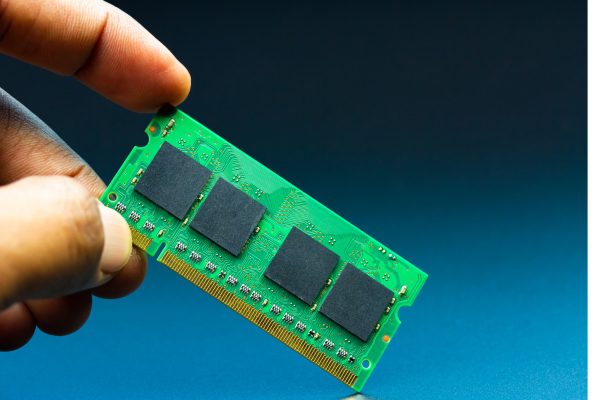Are you caught in the never-ending battle of DDR3 1600 vs 1866 RAM? Well, fear not, fellow tech enthusiast! We’re here to unravel the mystery and help you make an informed decision.
So, here’s the short answer: DDR3 1866 is faster, but is it worth it? Let’s dig deeper into the performance differences,
compatibility quirks, and real-world scenarios that’ll make your RAM choice a breeze. Stay tuned for all the juicy details!
DDR3 1600 vs. 1866: Unveiling the Performance Differences
In the world of computer systems, RAM (Random Access Memory) plays a crucial role in determining overall performance.
When it comes to selecting the right RAM for your system, the choice between DDR3 1600 and DDR3 1866 can have a significant impact.
Let’s dive into the main differences between these two variants and understand their performance characteristics.
What Is The Main Difference Between DDR3 1600 and DDR3 1866 RAM?
When comparing DDR3 1600 and DDR3 1866 RAM, the main difference lies in their clock speeds.
DDR3 1600 operates at a clock speed of 1600 MHz, while DDR3 1866 operates at a slightly higher clock speed of 1866 MHz.
This difference may seem small, but it affects the data transfer rates and overall performance of the RAM.
Tips for Comparing DDR3-1600 vs. DDR3-1866:
What Size Should I Get for DDR3 1600 and/or DDR3 1866?
When it comes to RAM size, it’s essential to consider your specific needs.
Both DDR3 1600 and DDR3 1866 are available in various capacities, such as 4GB, 8GB, or even higher.
Determine the memory requirements of the software and applications you use regularly.
If you engage in memory-intensive tasks like video editing or 3D rendering, opting for larger capacities would be beneficial.
Remember To Pay Attention To Clock Speeds Too
While the clock speed difference between DDR3 1600 and DDR3 1866 may not be significant, it can impact performance in certain scenarios.
Applications that rely heavily on memory bandwidth, such as video editing software or high-end gaming, can benefit from the increased clock speed of DDR3 1866.
However, for everyday computing tasks like web browsing or word processing, the difference may not be noticeable.
DDR3 1600:
Define DDR3 1600 and Explain Its Specifications
DDR3 1600 is a type of RAM that operates at a clock speed of 1600 MHz.
It is widely compatible with older systems, making it an excellent choice for users who have older hardware configurations.
DDR3 1600 offers reasonable performance for everyday tasks, such as web browsing, document editing, and light gaming.
Advantages of DDR3 1600
One of the significant advantages of DDR3 1600 is its widespread compatibility.
It can seamlessly integrate with older motherboards and CPUs that support DDR3 RAM, offering an affordable upgrade path.
If you’re on a budget or have an older system, DDR3 1600 provides a cost-effective solution.
Limitations of DDR3 1600

However, DDR3 1600 does have its limitations.
The lower bandwidth compared to higher clock speeds may result in performance bottlenecks when running memory-intensive applications or modern games that demand faster data transfer rates.
In such cases, upgrading to a higher clock speed RAM like DDR3 1866 or newer RAM technologies like DDR4 or DDR5 would be a more suitable choice.
Real-World Scenarios for DDR3 1600
In scenarios where you primarily use your computer for basic tasks like web browsing, document editing, and occasional light gaming,
DDR3 1600 will suffice. It provides satisfactory performance without putting a strain on your budget.
DDR3 1600 can be a suitable option for casual users, students, or small office setups that don’t rely heavily on memory-intensive applications.
DDR3 1866:
Define DDR3 1866 and Outline Its Specifications
DDR3 1866 is a type of RAM that operates at a clock speed of 1866 MHz, offering a slight performance boost compared to DDR3 1600.
It provides increased bandwidth and improved performance, particularly for memory-intensive tasks such as video editing, 3D modeling, and high-end gaming.
Related Artical: What Is Intel Evo Platform Laptop
Advantages of DDR3 1866
The higher clock speed of DDR3 1866 translates into faster data transfer rates and reduced latency, resulting in improved performance for memory-intensive applications.
If you engage in tasks that demand a higher level of memory bandwidth, DDR3 1866 can provide a noticeable performance boost compared to DDR3 1600.
Compatibility Considerations for DDR3 1866
While DDR3 1866 offers performance benefits, it’s important to note that not all older systems may support this higher clock speed.
Compatibility issues may arise if your motherboard or CPU is not designed to handle DDR3 1866.
Before considering an upgrade, ensure that your system supports DDR3 1866 to avoid any compatibility complications.
Real-World Scenarios for DDR3 1866
DDR3 1866 shines in scenarios where you engage in memory-intensive tasks, such as professional video editing, complex 3D rendering, or running demanding games at higher settings.
The increased bandwidth and improved performance make a noticeable difference in these situations, allowing for smoother multitasking, faster rendering times, and an overall enhanced user experience.
FAQs About DDR3 1600 vs 1866
Is 1866MHz better than 1600MHz?
Yes, 1866MHz RAM is generally better than 1600MHz RAM.
The higher clock speed of 1866MHz results in faster data transfer rates and reduced latency, leading to improved overall performance in memory-intensive tasks.
Can I mix 1600 and 1866 RAM?
Technically, you can mix 1600MHz and 1866MHz RAM, but the system will operate at the speed of the slower RAM module.
It’s generally recommended to use RAM modules with the same speed for optimal performance.
Is DDR3-1600 good for gaming?
DDR3-1600 RAM can still deliver satisfactory gaming performance for older games or those with less demanding memory requirements.
However, for newer games that rely heavily on memory bandwidth, higher-speed RAM like DDR3-1866 or newer technologies like DDR4 or DDR5 may offer better performance.
Which version of RAM is fastest?
Among DDR3 RAM variants, the fastest version would be DDR3-1866, thanks to its higher clock speed.
However, it’s important to note that newer RAM technologies like DDR4 or DDR5 offer even faster speeds and improved performance compared to DDR3.
Related Artical: How To Build A Small Form Factor Pc
Which DDR3 RAM is faster?
Within the DDR3 family, RAM modules with higher clock speeds, such as DDR3-1866, are faster compared to those with lower speeds like DDR3-1600.
The difference in speed translates into increased bandwidth and improved overall performance.
Which DDR3 RAM is fastest?
The fastest DDR3 RAM would be the one with the highest clock speed available, which can reach up to DDR3-2133.
However, it’s worth mentioning that DDR3-2133 RAM is less common and may have limited compatibility with older systems.
What is the fastest MHz for DDR3 RAM?
The fastest clock speed available for DDR3 RAM is 2133MHz.
RAM modules with this clock speed offer increased bandwidth and improved performance for memory-intensive tasks.
However, compatibility with older systems may be limited.
Which RAM is faster but costly?
RAM with higher clock speeds, such as DDR3-1866 or DDR4-3200, tends to be faster but also more expensive than lower-speed variants.
The increased performance comes at a higher cost due to advanced manufacturing processes and better components.
Is bigger RAM faster?
Having more RAM does not directly translate to faster performance.
However, having more RAM allows the system to handle larger data sets and run more applications simultaneously without slowing down due to insufficient memory.
This can indirectly improve overall performance and multitasking capabilities.
What is the highest RAM for a PC?

The maximum RAM capacity a PC can support depends on the motherboard’s specifications.
Modern motherboards typically support up to 64GB or 128GB of RAM, while some high-end workstation or server motherboards can handle even larger capacities.
Consult your motherboard’s documentation or manufacturer’s website to determine the maximum RAM capacity for your specific system.
Final Thoughts About DDR3 1600 vs 1866
In conclusion, when comparing DDR3 1600 and DDR3 1866, the choice ultimately depends on your specific needs and system requirements.
DDR3 1866 offers a higher clock speed and increased bandwidth, making it beneficial for memory-intensive tasks and demanding applications like video editing or gaming.
On the other hand, DDR3 1600 provides widespread compatibility with older systems and delivers satisfactory performance for everyday tasks.
Consider factors such as budget, compatibility, and the nature of your computing tasks when making a decision.
It’s also important to keep in mind that newer RAM technologies like DDR4 or DDR5 offer even greater performance advancements for future-proofing your system.

